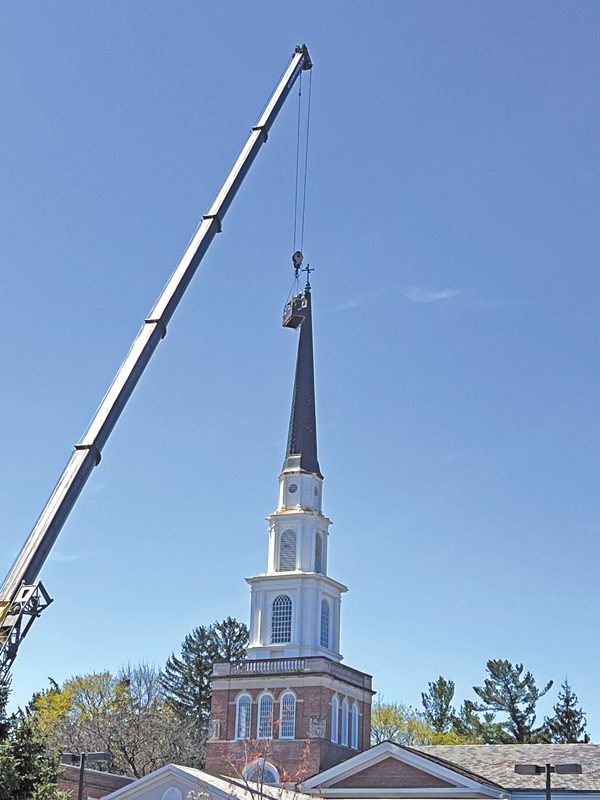
Zion’s steeple “can be seen all the way from University Hospital,” says senior pastor James Debner, but after almost seventy years, the spire—the metal section on top—needs repair. For easier access, the entire structure will be lifted off and set down in the church’s parking lot. | Stan Shackman
When I was a kid in the 1950s, I was an avid reader of Mad magazine. I remember one photo of a modern-style building captioned something like, “Is this a new progressive school? No, it’s a church.” They were making fun of the fact that after World War II, many churches experimented with contemporary architecture.
Not Ann Arbor’s Zion Lutheran. The congregation went in the opposite direction when it left downtown for the Eberwhite neighborhood in the 1950s: its church at 1501 W. Liberty has a classical facade with six pillars and a tall steeple with a spire on top.
“The steeple can be seen five miles away,” says James Debner, Zion’s senior pastor. “It can be seen all the way from University Hospital.” It seems even taller than it is because the church is perched on high ground uphill from downtown.
The steeple is not merely an architectural embellishment: the style, which dates back to the Middle Ages, symbolizes reaching toward heaven. Zion’s parishioners were so pleased with the way their edifice turned out that they renamed their church publication The Tower, a name they’ve used ever since.
Church members, neighbors, and passersby all enjoy seeing the tower, but they will have to live with a shorter one for several months. At almost seventy years old, its spire—the metal section on top—is about to be removed for repair.
“The spire will be set straight up on the east side of the parking lot,” explains Sharon VanRiper, the congregation’s president. Working on it at ground level will be easier and safer.
Zion traces its beginnings to 1875, when parishioners worshipped in a church at the corner of Washington and Fifth Ave. As attendance grew after WWII, they bought land on Liberty west of Soule Blvd. and hired the Detroit architectural firm of George DeWitt Mason to design their new church. The firm had an impressive list of projects, including the Chelsea railroad station, the Grand Hotel on Mackinac Island, and Detroit’s Belle Isle Aquarium.
Mason died in 1948, but the firm had continued to design in the traditional style he was known for. Work on the new church started on September 15, 1956, when the cornerstone was moved from the downtown church to the new location. In May 1960 the congregation dedicated the finished building.
They hope to complete the repairs and lift the spire back into place before the weather turns cold. According to Rev. Debner, “this work should make the tower last another seventy to one hundred years.”